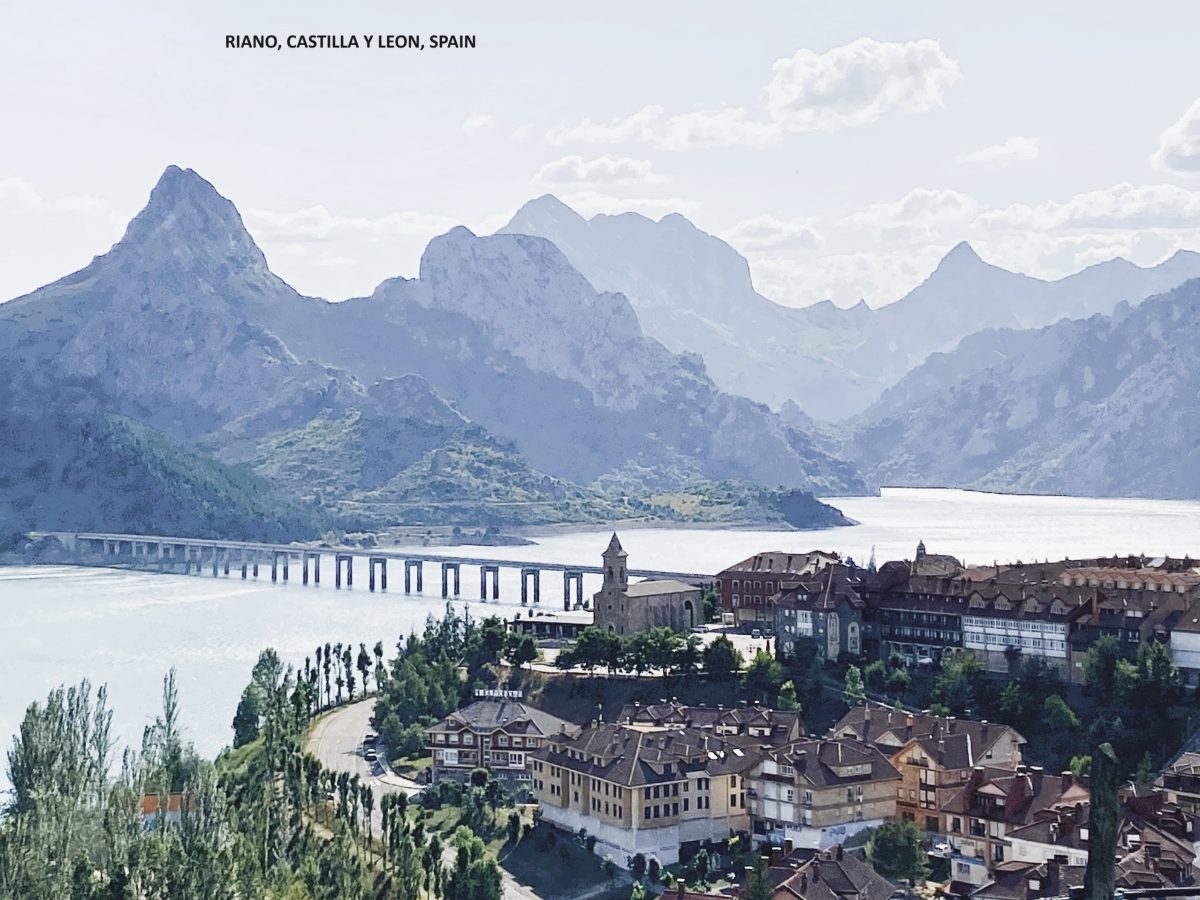Sometimes referred to as the Pearl of the Eifel Nature Reserve, Monschau is a small fairy tale town on the banks of the River Rur (not to be confused with the Ruhr). Of course it is very much a tourist town (complete with tourist train and American accents) but it is picturesque and, being almost halfway between Tournai and Marburg, it was the perfect spot for us to break our journey.
After registering at a (very expensive) campsite outside the town, we made our way to the town centre in the Van and parked on Herbert Isaac Strasse outside the Handwerkmarkt. It is a quick and easy walk from there into the Altstadt although, in truth, almost all of Monschau could be described as Altstadt. We had it in mind to explore the centre first and then grab a bite to eat before walking the Panorama Weg (more about that later) and finishing inside the Handwerkmarket – and that is precisely what we did. The fact is, Monschau is a very small town and you really don’t need more than half a day to see it. If the weather was better we might have stayed a little longer but rain was forecast.
Monschau dates back to at least the 1100s. However, its heyday was during the 17th to 18th century when it had a thriving textile industry. Thereafter the town’s prosperity went into decline but it has been well preserved and it looks very much as it did some 250 years ago. Tourism is now it’s only source of income.
The town is replete with narrow winding cobbled streets lined by more than 200 historically listed houses; the vast majority of which are 18th century half timbered properties. Those on the banks of the Rur make for an especially pretty sight.
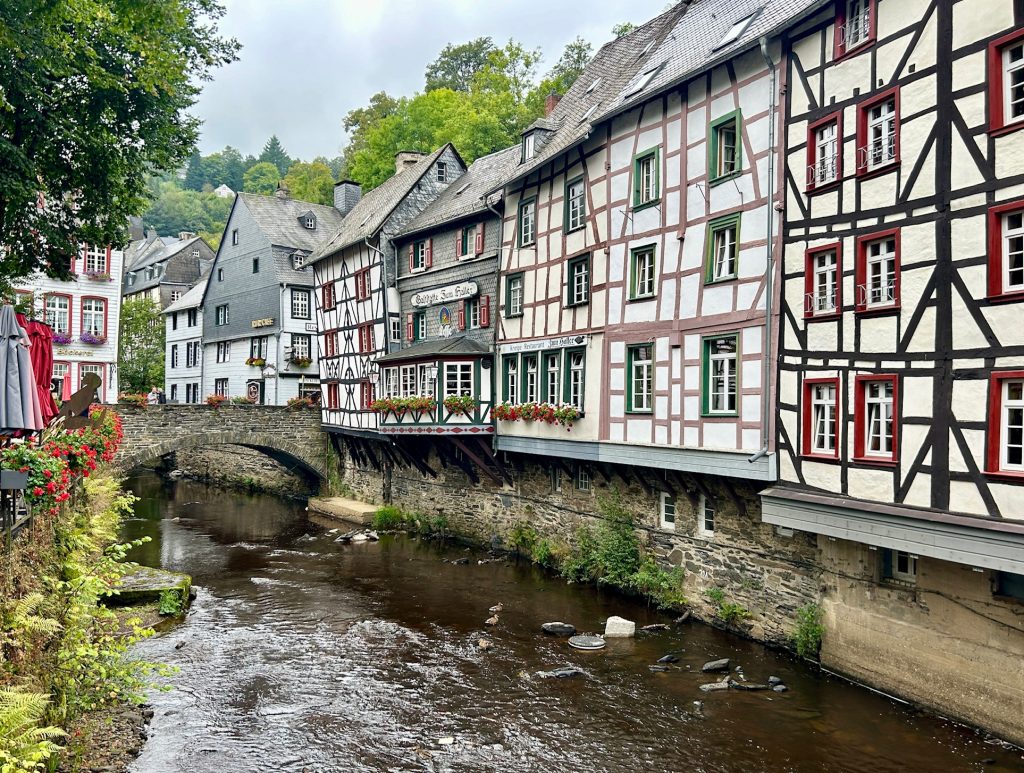
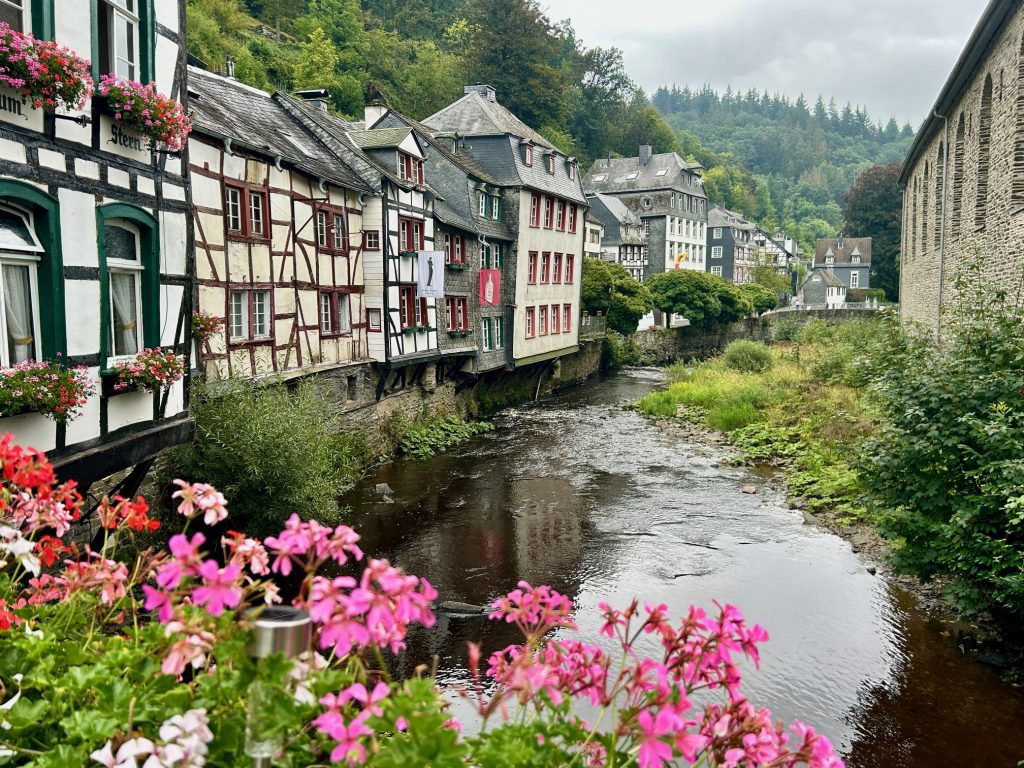
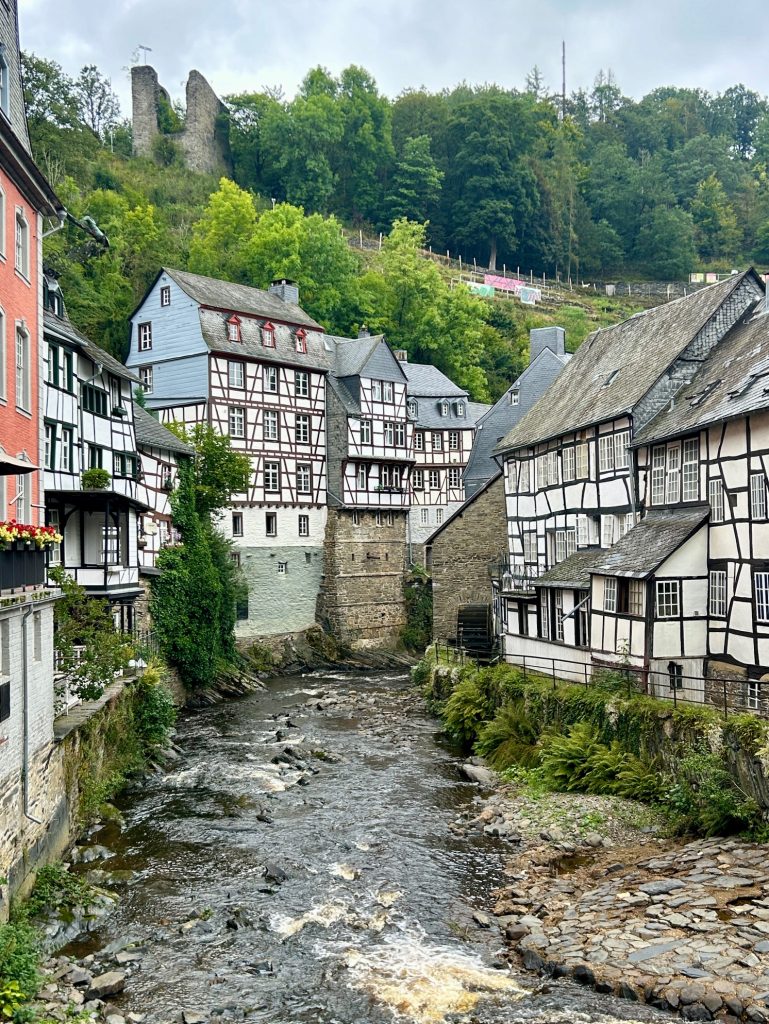
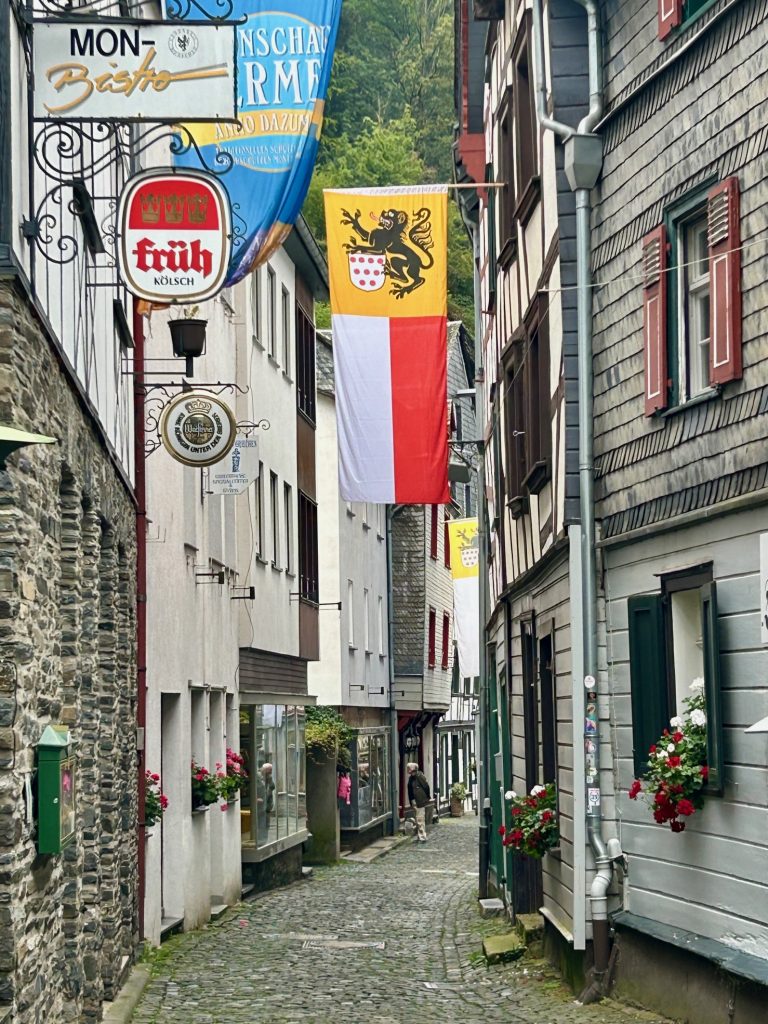
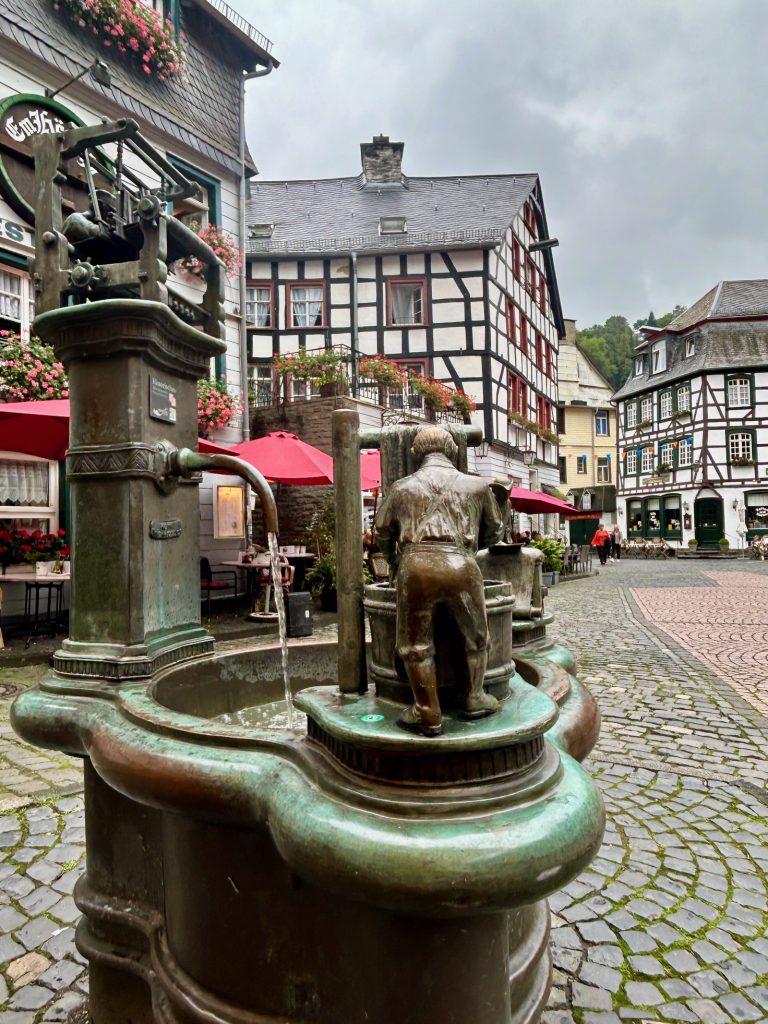
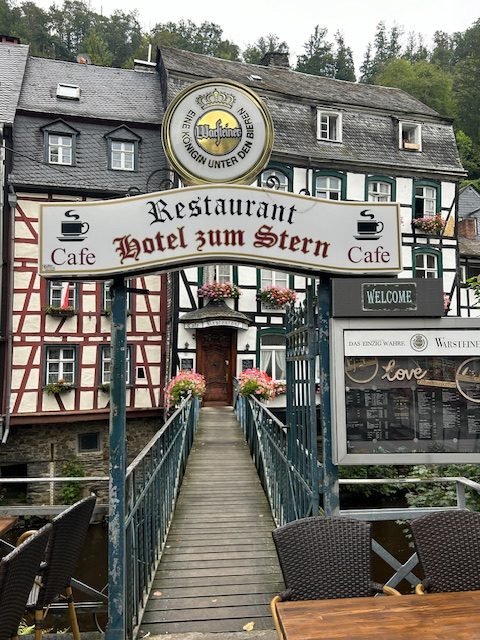
After a quick exploration of the town taking in the Catholic and Evangelical Churches and the Rotes Haus (an interesting and impressive fully furnished Mansion House built by a successful local merchant which perfectly reflects bourgeois living in the 18th century), we settled down for a late brunch at a cafe on the market place. Well, I had something to eat (and the obligatory beer) while Vanya simply went for her favourite Spaghettieis (although she wasn’t all that impressed with this particular offering).
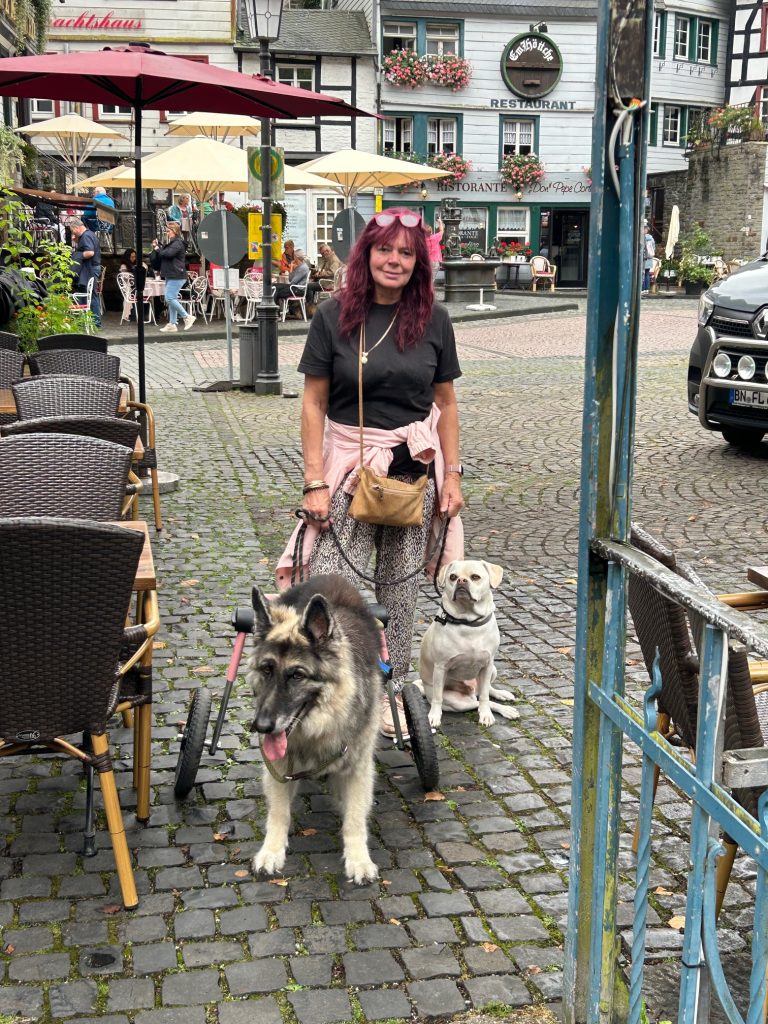

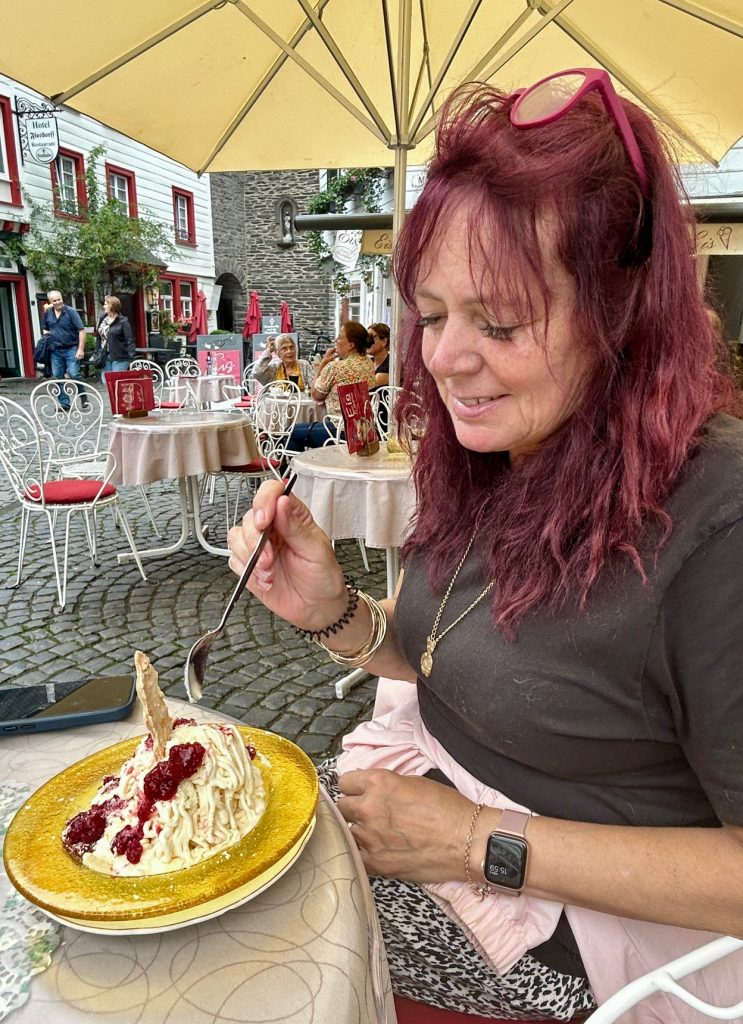
The two churches surprised me. It is invariably the Roman Catholic rather than the Protestant churches which are the more sumptuously furnished. It is not so in Monschau. There’s a simple richness in the decor and furnishings of the Evangelical church that reflects the success of the local merchants at the time the church was opened (1810) and/but which is missing from the Catholic church.


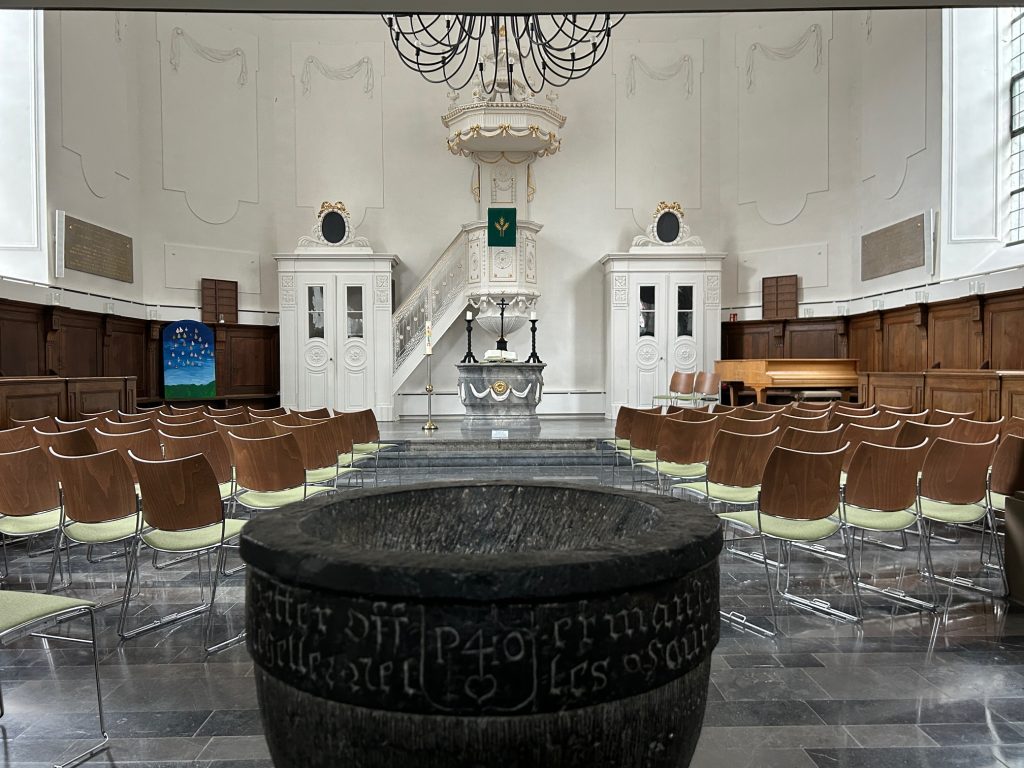
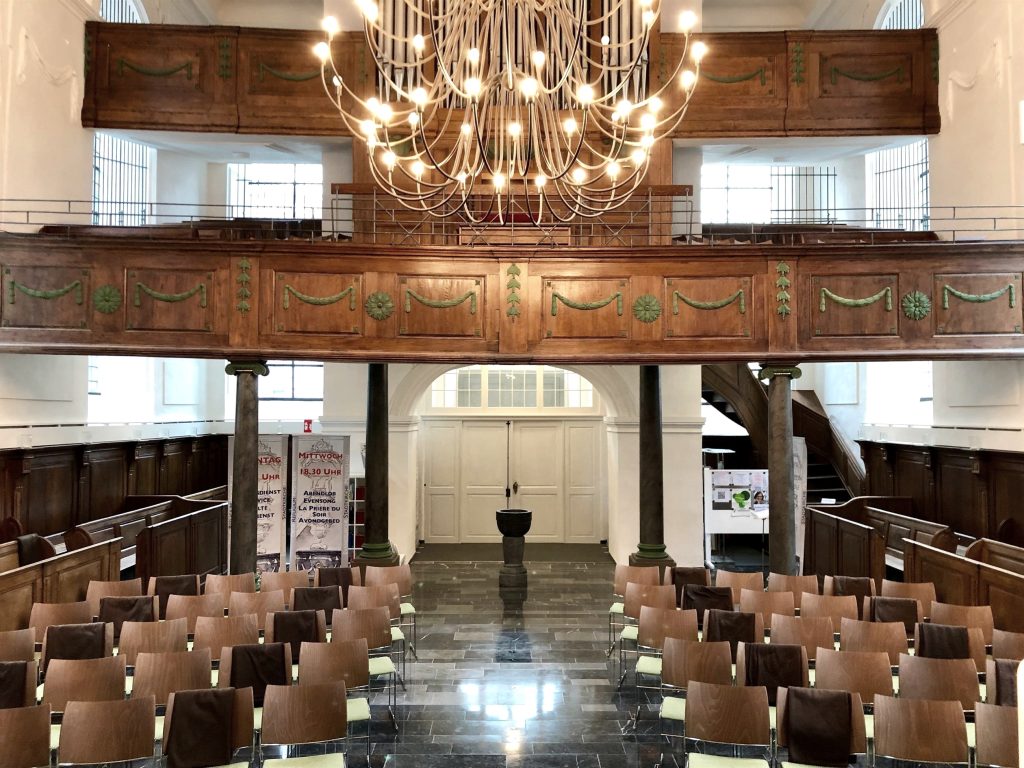
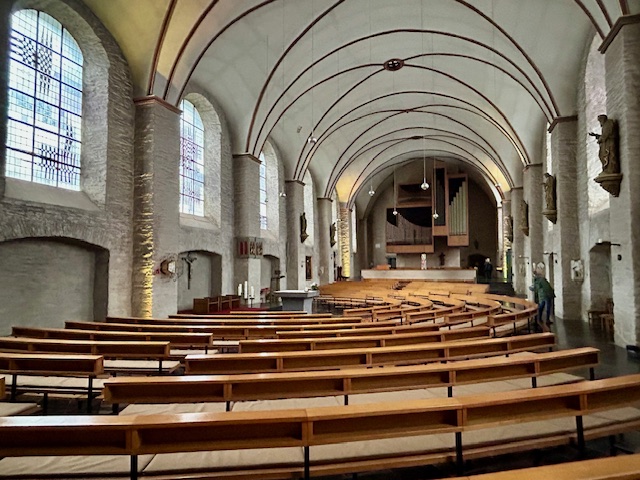
Before setting off for the Handwerkmarkt which Vanya was keen to see, I took a quick walk up and around what is known locally as the Panorama Weg. It’s a short 1.5 mile walk which loops around the outside of the town and offers some fine views of both the town and the town castle (Burg Monschau). Don’t believe those who tell you that there are some excellent views of the town from the castle. The best views are to be found walking the Panorama Weg and it is an easy little walk.
As for the 13th century Burg Monschau; it isn’t much of a place. It has some pretty gardens but most of the castle is given over to use as a youth hostel.
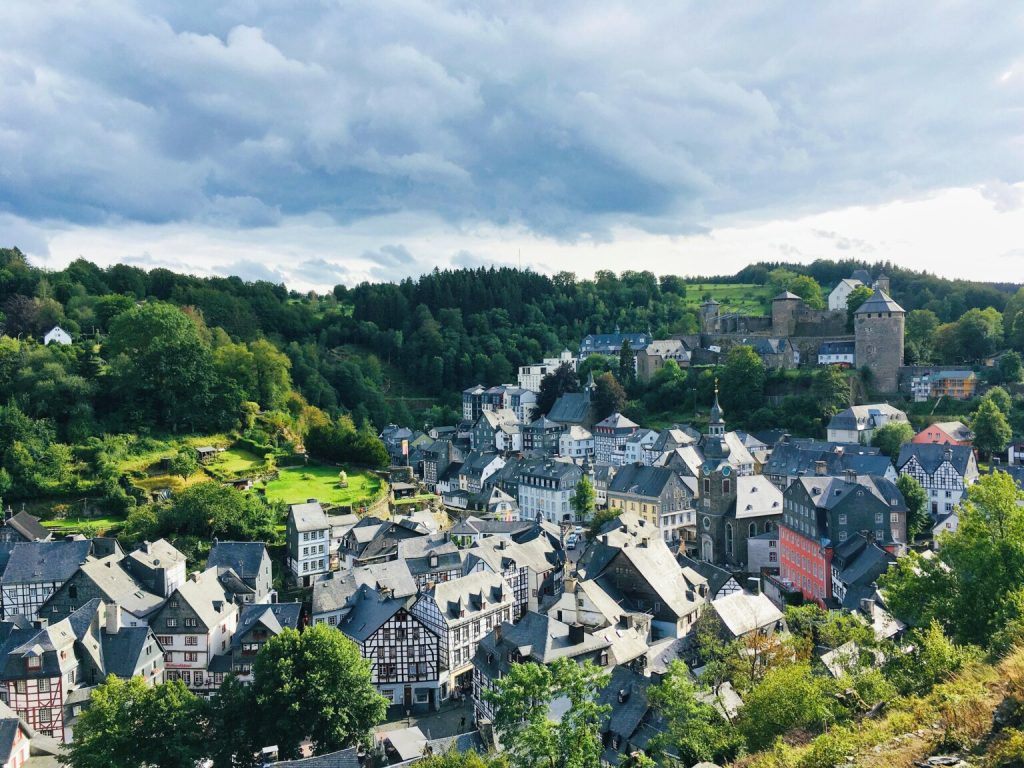

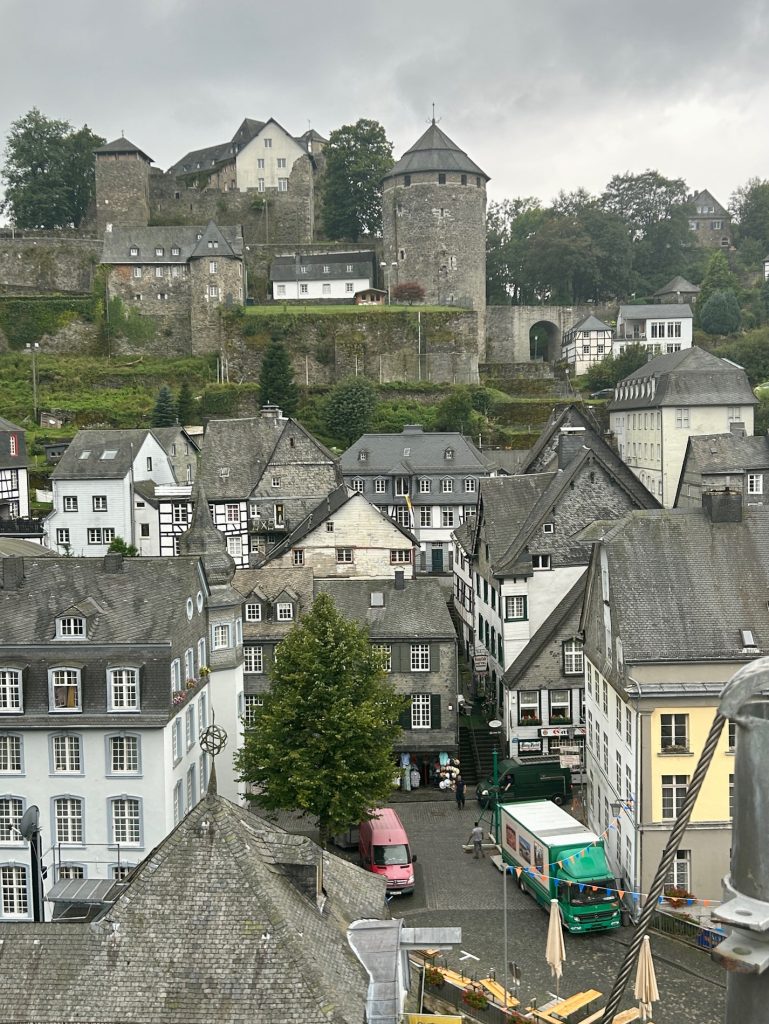
And so to the Handwerkmarkt. It’s a large and impressive handicraft market with the added attractions of a splendid glass store (complete with on site glass blowing) and a striking sand sculpture exhibition. I suspect it was established by local merchants so as to capitalise from the many tourists drawn to this very pretty town and, if so, good luck to them. It is worth an hour or two of anyone’s time (especially if it’s raining – and, by the time we got there, it was raining). There’s a small charge for entry into the sand sculptures (understandable – the sculptors have to make a living) and an even smaller charge if you want to try glass blowing but, otherwise, entrance is free.
Overall, we enjoyed our short excursion into Monschau and had it not started raining, I believe we would have stayed longer.
Our next stop is Marburg in the Hesse Region of Germany and I for one am looking forward to that.

